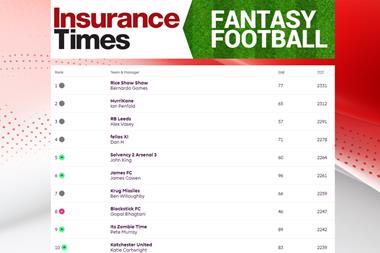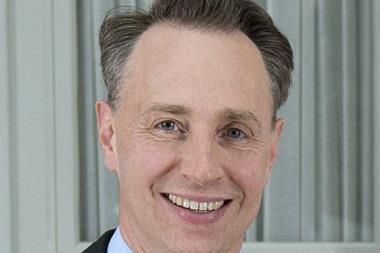’Insurance demand is among the first to be impacted’ by rising cost of living, says UK insurance lead
UK non-life insurers will have to wait until 2025 for any signs of growth as inflation and the cost of living crisis continue to impact premium income.

This is according to EY’s latest annual EY Item Club Outlook for Financial Services report, published today (6 February 2022).
The report warned that insurers face slowing premium income growth this year, as high inflation, cost of living pressures and a rise in borrowing costs continue to impact product demand.
The general insurance sector is expected to experience reduced premium growth this year, with a forecast growth of 4.5% – down from a projected 4.9% in 2022).
There is also little likelihood of any return to real growth in the next 24 months – EY’s latest forecast predicted that non-life premium income would further slow to 3.8% in 2024, before picking back up to 4.7% in 2025.
Fewer insurable items
High inflation and falling real incomes are expected to continue to hold back consumers from spending on more expensive – and thus insurable – items such as cars in the first half of this year, according to EY.
Read: Company market outlook for 2023 becoming progressively worse – Fitch Ratings
Read: Global commercial insurance costs rose 4% in Q4 2022 – Marsh
Explore more risk management content here or discover more news stories here
“Looking more closely at the private car market, financial strains on households and ongoing supply chain disruption to car manufacturers have contributed to continued weakness in new car sales,” the report added.
A total of 179,419 new vehicles were registered to private buyers in the UK in the last three months of 2022, only 1% up on the same period in 2021, when Covid-19 restrictions were in force.
Excluding the pandemic period, registrations from October to November 2022 were the lowest for those months since 2011.
A fall in housing market activity will also negatively impact demand for non-life insurance. With mortgage rates much higher than a year ago and affordability still stretched, residential transactions are expected to fall back this year, impacting insurance demand.
The outlook explained: “Recent premium price increases on motor and home insurance – in late 2022 rates were around 30% higher than a year earlier – should provide a boost to non-life insurers, although the increase in rates partly reflect a rise in costs.”
The report predicts the rate at which premium prices have been rising is unlikely to prove sustainable given the financial strains facing households, but at the same time, cost pressures should also fall back as inflation and supply chain pressures ease.
Challenging conditions
Rodney Bonnard, UK insurance leader at EY, added: “Non-life insurers are braced for challenging conditions to continue for the foreseeable future.
“With the wider economic environment forecast to report declining household incomes, rising cost of living pressures and an uncertain housing market, history tells us that insurance demand is among the first to be impacted.
“Insurers will need to carefully manage their cost bases and look to innovative ways of finding growth and maintaining their current levels of capitalisation.
“Even with a difficult economic backdrop, insurers must not drop their focus on other priority areas such as achieving net zero, greening their products, services and supply chains and carrying out digital transformation.”
He added: “There are green shoots on the horizon and non-life insurers will be looking to the prospect of inflation easing back through 2023, conditions improving and higher premium income growth kicking in from 2025.”












































No comments yet